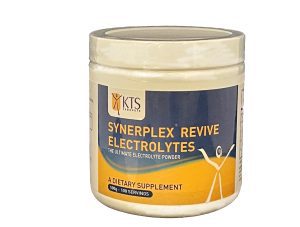 Feeling drained and out of balance? 😩 Your body might be missing essential electrolytes!
Feeling drained and out of balance? 😩 Your body might be missing essential electrolytes!
Don’t worry, we’ve all been there—trying different supplements that never quite hit the mark. 😕
But not all electrolytes are created equal. Many lack the proper balance your body needs, leaving you frustrated and still feeling off. 🚫
Synerplex Electrolytes™ offer a unique 2-1 ratio of potassium over sodium, plus vital bicarbonates and chlorides, ensuring optimal cardiovascular health, cell communication, and nervous system function. 💪✨
Ready to feel your best? Order Synerplex Electrolytes™ today and give your body the balance it deserves! 🌟

Both sodium and potassium have important functions in the human body. Aside from cardiovascular health, it is important in how your cells communicate with each other as well as the proper functioning of your nervous system. The brain operates on a sodium-potassium pump.
So how do we achieve a balance? Obviously, we need to cut back a little on the amount of sodium we ingest. Secondarily, we should increase the amount of potassium rich foods we eat like, baked potatoes (919 mgs each), bananas (362 mgs), raw carrots (320 mgs), broccoli (209 mgs) and spinach (268 mgs) to name a few. You could try coconut water which comes in between 470-540 mgs per 8 ounce serving but that comes with a warning. Too much potassium at one time can cause problems. Normally, our kidneys would clear out any excess potassium but some medications and people with kidney disease may not do that efficiently. Too much can may cause problems like muscle weakness or dangerous heart rhythms.[7]
The literature is clear about one thing, it is the balance of sodium and potassium that is important. That is why our Synerplex Electrolytes™ are so beneficial. They present you with a 2-1 ratio of potassium over sodium, ideal in today’s world. Not only that, but you get a balance of bicarbonates and chlorides, two important electrolytes. You would have to search far and wide to find any other electrolyte on the market, anywhere in the world to find anything close to Synerplex Electrolytes™.
[1] Bernstein AM, Willet WC. Trends in 24-h urinary sodium excretion in the United States. 1957-2003: a systematic review. Am J Clin Nutr. 2010;92:1172-1180.
[2] Lloyd-Jones DM, Hong Y, et al. Defining and setting national goals for cardiovascular health promotion and disease reduction: the American Heart Association’s strategic Impact Goal through 2020 and beyond. Circulation. 2010;121:586-613.
[3] Frediani J, Reilly C, Clark P, Gary R, Higgins M, Dunbar S. Quality and adequacy of ddietary intake in a southern urban heart failure population. J Cardiovasc Nurs. February 17 2012. doi: 10/1097/JCN, 0b013e318242279c.
[4] Gupta D, et al. Dietary sodium intake in heart failure. Circulation. 2012;126:479-485.
[5] http://www.webmd.com/a-to-z-guides/potassium-content-of-fruits-vegetables-and-other-foods-topic-overview
[6] http://www.ars.usda.gov/SP2UserFiles/Place/80400530/pdf/DBrief/10_potassium_intake_0910.pdf
[7] http://www.healthcommunities.com/electrolyte-imbalance/too-much-potassium-too-little-potassium_jhmwp.shtml


